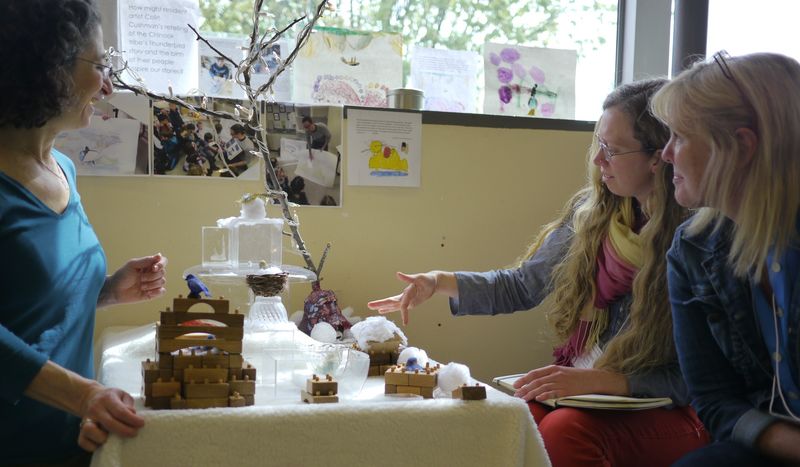Learning about playing to learn

Play is a strategy for learning for which humans are hardwired. This message seems clear, both in the literature as well as Opal School’s lived experience. This year, we’re challenging ourselves to learn more about this. What does it mean for a school to be guided by “a pedagogy of play?”
Inspired by this question, we gathered for our staff retreat and shared stories of times this summer that we found ourselves playing. What were the qualities of that experience?
Our circle was animated as colleagues told stories of being lost in play: Bike riding down hills without using brakes; walking deeper into the ocean than ever before; climbing beyond the tree-line; painting in gardens; dancing with shopping carts… While each experience was unique, several threads emerged. In many, the play-er described finding herself immersed in the experience, completely absorbed, living beyond anxiety or concern about outcome. That absence of worry, though, didn’t mean that the stories were uncharacterized by risk: Several stories involved the thrill and adrenaline that accompanies risk. Many of the adventures were social: Play involved communication, connectedness, shared experience. Creativity was another steady thread, as was an aesthetic, sensorial dimension that contributed to joy. Many involved moving out of the ordinary, into novel territory.
As we prepare our classrooms for the arrival of children, we ask ourselves: How are our physical spaces and structures creating conditions that invite these elements? How do these playful conditions support learning? How can we consistently support what physicist Andre Geim, cautious about using the word “play”, calls adventurous, “curiosity-driven research”?
How did you play this summer? What were the qualities of that play? How will you create the conditions for playful learning in your learning community this year?
